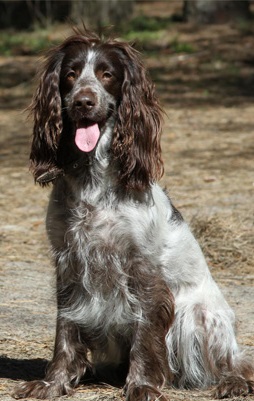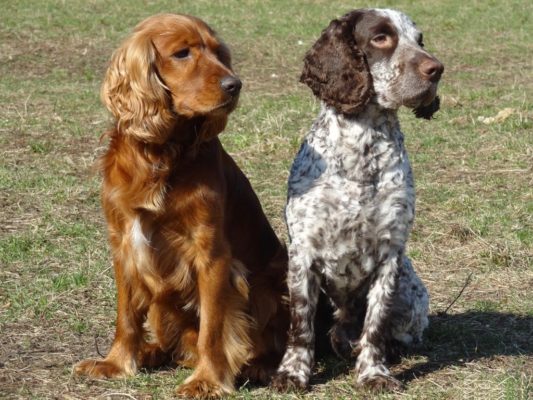Russian Spaniel
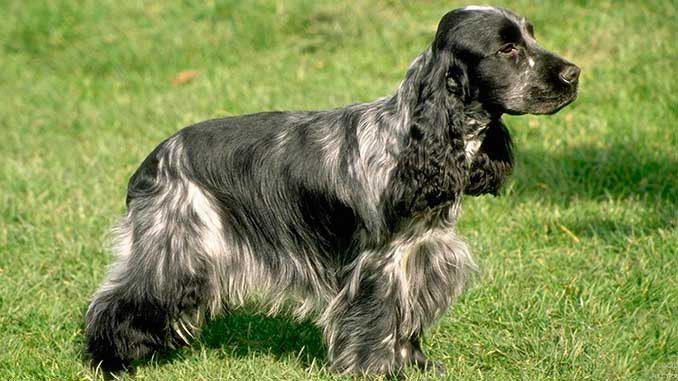
Despite its innate ability to work, the Russian Spaniel becomes kind and gentle in the home environment. He is called a personal therapist. It is possible to chat and socialize after a hard day’s work. He needs to have contact with the owner. But if the animal barks at a stranger, it is worth giving importance.
Table of Contents
Breed Information
| Another Name | Rosyjski Spaniel |
| Origin | USSR |
| Height | 38-45 cm |
| Weight | 9-16 kg |
| Fur | Long |
| Color | Black and white, brown and white, red and white, tricolor |
| Lifespan | 12-14 years |
| FCI Classification | Breeds outside the FCI classification |
| Group | Hunting dogs |
| Price | From $130 to $500 |
Breed Photos
Origin History
The breed’s history is associated with the name of Nicholas Romanov, a relative of the last Russian tsar. He adored dogs and often brought exotic representatives from his travels. He was the leader of hunting clubs. Thanks to Romanov, local breeders, and dog breeders quickly became interested in spaniels. They made the dogs good hunters of birds, pheasants. Since hunting, the latter was popular among the emperors, breeding cockers and sprinters to be profitable. At first, representatives of the breed were imported from England. Soon they began to breed with local tsarist dogs. But such first Russian Spaniels were little like their foreign parents. Their abilities and functions differed from those of the modern representatives of the breed.
Until the twentieth century, non-standard specimens at shows were placed separately from their British congeners. The dogs were even divided into two castes: Moscow and St. Petersburg representatives. The Great Patriotic War destroyed the works on Russian Spaniels. After the revolution, the history of the breed had to be written anew. The first standard of appearance was approved in 1951. After 20 years, the mating of Russian representatives with other types of spaniels was prohibited. It was the official recognition of the independence of the breed. In the 1960s, dogs became popular in hunting families. Already in the 1990s, Russian Spaniels were on the verge of extinction. But cynologists did everything to prevent this from happening.
Appearance
When creating the breed, the emphasis was on stamina and searching ability. Scientists were not particularly concerned with appearance. But the dogs have a little charm and grace. Russian Hunting Spaniels have a long dry head with an elongated muzzle. White teeth with a scissor-like bite. Thin lips and a large nose. Large brown or dark brown eyes. Long ears are hanging along the cheekbones.
Dogs are endowed with a solid elongated body. The dry legs are set parallel to each other. The dog moves at a light gallop or trot. The straight tail may be half cropped. Usually, working dogs have it in order not to disturb a dog while hunting for a game. Long straight or wavy coat. Hair shiny and close to the body. One-, two- and three-tone colors of black, brown, or red are common. White inserts on the chest and throat are allowed.
Character
Despite its innate ability to work, the Russian Spaniel becomes kind and gentle in the home environment. He is called a personal therapist. It is possible to chat and socialize after a hard day’s work. He needs to have contact with the owner. But if the animal barks at a stranger, it is worth giving importance.
Adult members of the breed retain a childlike interest and love of games. It helps to find contact with children quickly. Dogs are suitable even for families with newborns, ready to tolerate jerking and child pests. Due to lack of attention, may behave aggressively and spoil property. But if you allocate at least half an hour a day to play with the pet, there will be no problems.
Care
During hard frosts, keep the Russian Hunting Spaniel in the house. During warm weather, he can live in an enclosure outside. Molting in dogs occurs seasonally. Apartment pets shed their hair evenly throughout the year. Comb your pet every other day with a short-toothed comb. To make it easier, use special sprays. You can make your conditioner: mix one tablespoon of vinegar or citric acid with one liter of water.
The breed standard prohibits haircuts. Some owners disregard the rule and have their pet groomed at least a month before the show. Bathing procedures should not be carried out more than once a month. If the dog has been wallowing in mud, unscheduled bathing is allowed. Brush his ears once or twice a month and air them out every day. Clip claws once a month. Walk your Russian Spaniel two to three times a day.
Training
The dog is prone to training. It carries out commands with ease and is rarely capricious. Intelligent Russian Spaniels are good at memorizing words. But you should not overload the animal with mental stress. By nature, the dog is a tracker and hunter. It is enough to know the basic commands. Training should begin at birth or after the purchase of a puppy. Carry out training is better for the head in the family so that the pet will remember the owner. Hunting functions should be developed with training with a frozen bird. Next, train the dog to pick up birds in the water. Then move on to regular bird-catching. You should start such training from three months of age.
Common Diseases
Genetic diseases in representatives of the breed are not common. But this does not protect Russian Hunting Spaniels from various types of infections: leptospirosis, fungal diseases, toxoplasmosis, and helminthiasis. Hanging large ears can expose the dog to otitis media. It is widespread in representatives who bathe a lot. Possible food allergies, obesity. Therefore, a clear, balanced diet and regular activity should be part of the routine.
Nutrition
The dog has an enormous appetite. If it were possible to eat all day, the Russian Spaniel would do it. But it is worth sticking to the standard ration so as not to harm the pet. The amount of natural food for an adult Russian Spaniel is 30-60 g/kg of weight. Dry food – 40 g/kg. For the pet’s nutrition will do:
- heat-treated beef;
- fillet of sea fish;
- low-fat fermented dairy products;
- boiled oatmeal, millet, and rice;
- broths;
- potatoes, pumpkin, carrots;
- greens.
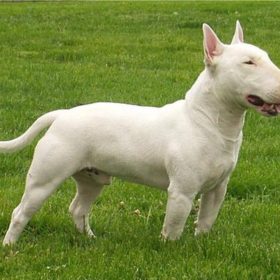 Bull Terrier
Bull Terrier Irish Red and White Setter
Irish Red and White Setter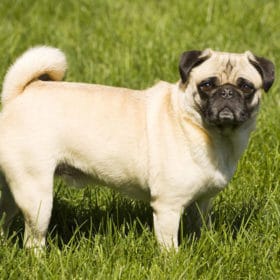 Pug
Pug Saluki
Saluki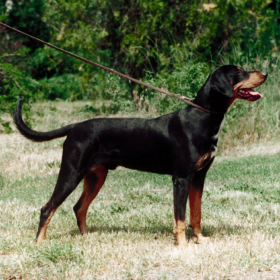 Transylvanian Hound
Transylvanian Hound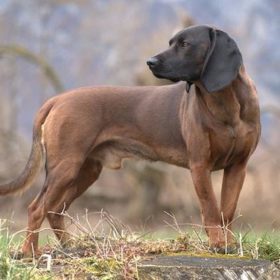 Bavarian Mountain Hound
Bavarian Mountain Hound